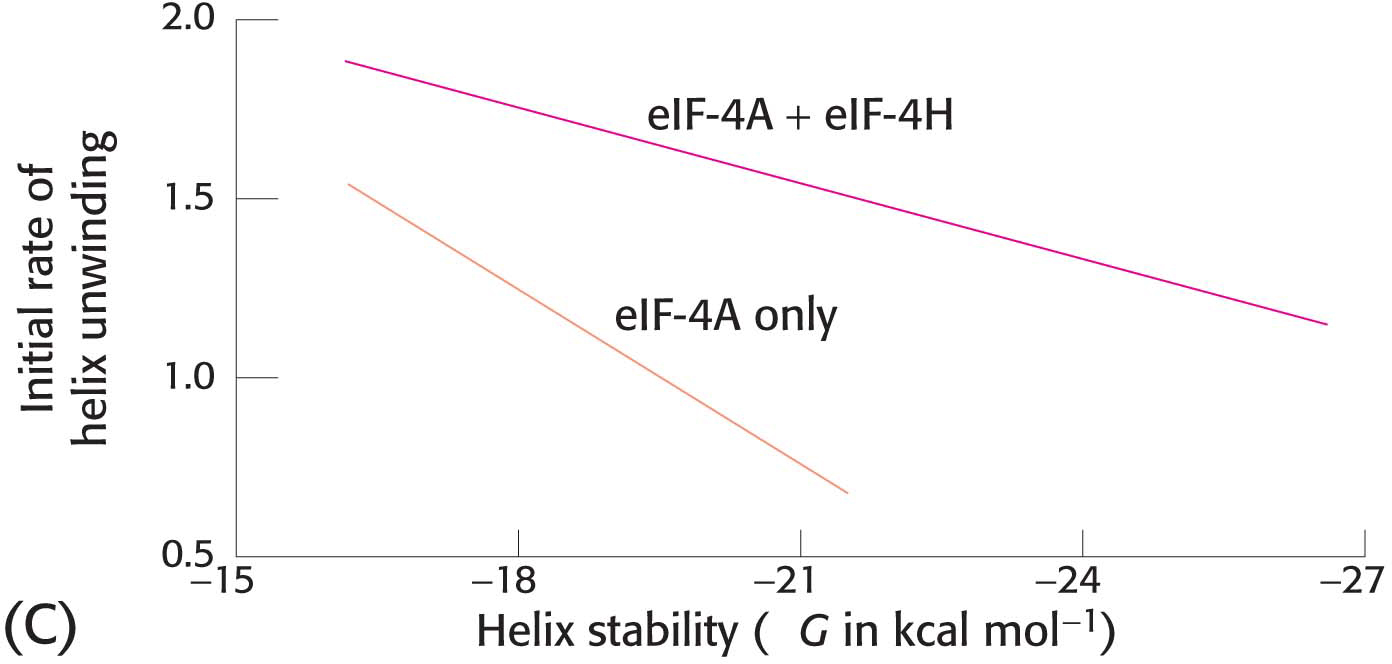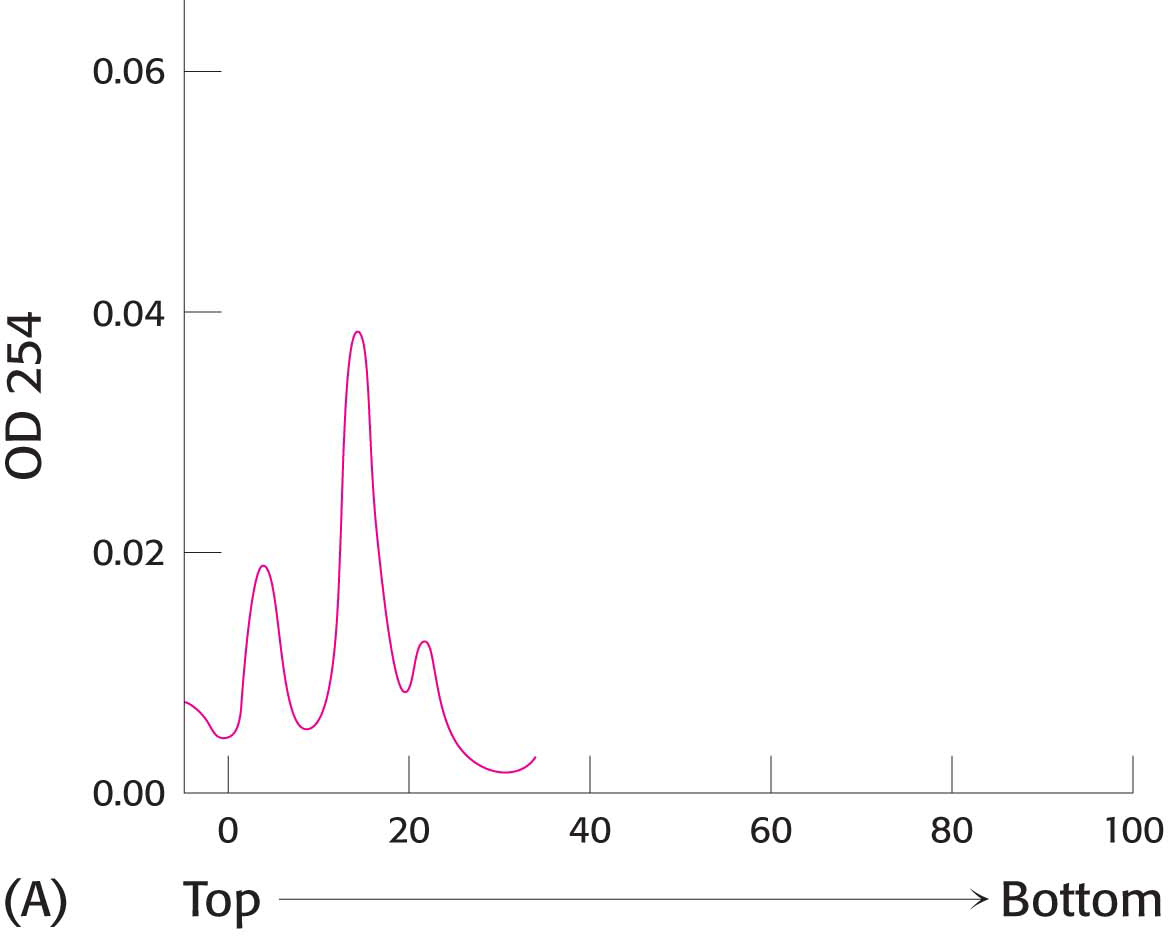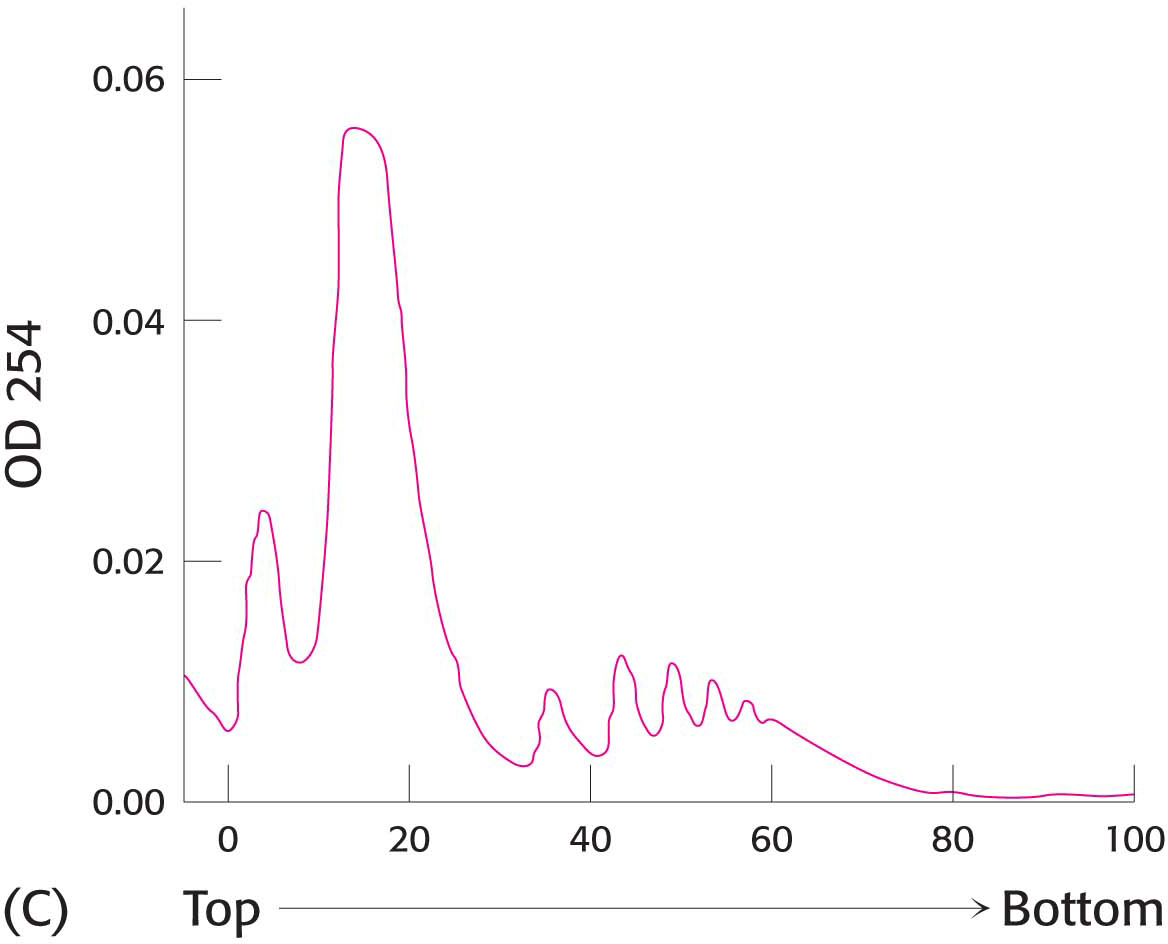PROBLEMS
Question 40.1
1. Babel fish. Why is protein synthesis also called translation?
Question 40.2
2. Correct phrasing. What is meant by the phrase reading frame?
Question 40.3
3. Match ’em. Match each term on the right with the terms in parts a, b, and c. ✓ 3 ✓ 4
Initiation Initiation Initiation Initiation Initiation Initiation Elongation Elongation Elongation Elongation Termination Termination Termination Termination | AUG IF2 fMet Peptidyl transferase EF- AUG RRF GTP Transformylase UGA GTP GTP Shine– Peptidyl transferase |
Question 40.4
4. Wasted effort? Transfer RNA molecules are quite large, given that the anticodon consists of only three nucleotides. What is the purpose of the rest of the tRNA molecule? ✓ 3
Question 40.5
5. Light and heavy ribosomes. Density-
Question 40.6
6. The price of protein synthesis. What is the smallest number of molecules of ATP and GTP consumed in the synthesis of a 200-
Question 40.7
7. Viral mutation. An mRNA transcript of a T7 phage gene contains the base sequence
Predict the effect of a mutation that changes the G identified by the arrow to A. ✓ 3
Question 40.8
8. Enhancing fidelity. Compare the accuracy of (a) DNA replication, (b) RNA synthesis, and (c) protein synthesis. What mechanisms are used to ensure the fidelity of each of these processes? ✓ 4
Question 40.9
9. You have to know where to look. Bacterial messenger RNAs usually contain many AUG codons. How does the ribosome identify the AUG specifying initiation? ✓ 4 ✓ 5
Question 40.10
10. Triggered GTP hydrolysis. Ribosomes markedly accelerate the hydrolysis of GTP bound to the complex of EF-
Question 40.11
11. Blocking translation. Devise an experimental strategy for switching off the expression of a specific mRNA without changing the gene encoding the protein or the gene’s control elements. ✓ 3
Question 40.12
12. Directional problem. Suppose that you have a protein-
(a) At t = 1 minute, you isolate intact protein A from the system, cleave it with trypsin, and isolate the five peptides. Which peptide is most heavily labeled?
(b) At t = 3 minutes, what will be the order of the labeling of peptides from heaviest to lightest?
(c) What does this experiment tell you about the direction of protein synthesis?
Question 40.13
13. A timing device. EF-
Question 40.14
14. Fundamentally the same, yet … List the differences between bacterial and eukaryotic protein synthesis. ✓ 6
Question 40.15
15. Membrane transport. What four components are required for the translocation of proteins across the endoplasmic reticulum membrane? ✓ 4
Question 40.16
16. Like a border collie. What is the role of the signal-
Question 40.17
17. Push, don’t pull. What is the energy source that powers the cotranslational movement of proteins across the endoplasmic reticulum? ✓ 5
Question 40.18
18. An assembly line. Why is the fact that protein synthesis takes place on polysomes advantageous? ✓ 5
Question 40.19
19. Iron regulation. What effect would you expect from the addition of an iron-
Question 40.20
20. Predicting microRNA regulation. Suppose that you have identified an miRNA that has the sequence 5′-GCCUAGCCUUAGCAUUGAUUGG-
Chapter Integration Problems
Question 40.21
21. Déjà vu. Which protein in G-
Question 40.22
22. Family resemblance. Eukaryotic elongation factor 2 is inhibited by ADP ribosylation catalyzed by diphtheria toxin. What other G proteins are sensitive to this mode of inhibition?
Question 40.23
23. Contrasting modes of elongation. The two basic mechanisms for the elongation of biomolecules are represented in the adjoining illustration. In type 1, the activating group (X) is released from the growing chain. In type 2, the activating group is released from the incoming unit as it is added to the growing chain. Indicate whether each of the following biosyntheses is by means of a type 1 or a type 2 mechanism:
(a) Glycogen synthesis
(b) Fatty acid synthesis
(c) C5 → C10 → C15 in cholesterol synthesis
(d) DNA synthesis
(e) RNA synthesis
(f) Protein synthesis
Question 40.24
24. The final step. What aspect of primary structure allows the transfer of linear nucleic acid information into the functional three-
Data Interpretation and Challenge Problems
Question 40.25
25. Helicase helper. The initiation factor eIF-
(a) What are the effects on eIF-
(b) Why did measuring the helicase activity of eIF-
(c) The initial rate of helicase activity of 0.2 μM of eIF-
(d) Next, the effect of RNA–
(e) How might eIF-
[Data from N. J. Richter, G. W. Rodgers, Jr., J. O. Hensold, and W. C. Merrick. Further biochemical and kinetic characterization of human eukaryotic initiation factor 4H. J. Biol. Chem. 274:35415–
Question 40.26
26. Size separation. The protein-
(a) What do the three peaks of absorbance in graph A represent?
The experiment was repeated except that, this time, the RNase treatment was omitted.
(b) Why is the centrifugation pattern in graph B more complex? What do the series of peaks near the bottom of the centrifuge tube represent?
Before the isolation of the protein-
(c) What is the effect of growing cells under hypoxic conditions?
[Data from M. Koritzinsky et al. EMBO J. 25:1114–
Question 40.27
27. Suppressing frameshifts. The insertion of a base in a coding sequence leads to a shift in the reading frame, which in most cases produces a nonfunctional protein. Propose a mutation in a tRNA that might suppress frameshifting.
Question 40.28
28. The exceptional E. coli. In contrast with E. coli, most bacteria do not have a full complement of aminoacyl-
Selected Readings for this chapter can be found online at www.whfreeman.com/